Este post também está disponível em:
Português
English
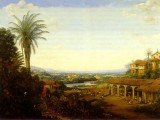
The plastic arts in the northeast had external influences and information and help to build a genuinely Brazilian and local art – a process of appropriation and recreation that goes back to the colony.
European artists who accompanied Maurício de Nassau during the occupation of Dutch Pernambuco (1630-54) are credited with the first images of the landscape of Brazil and the Northeast in particular.
Frans Post recorded the vast horizons of the Northeast, its mills and forts; Albert Eckhout fixed animals, plants and typical characters on large canvases; the fauna and flora of the new Dutch domains were drawn in detail by Zacharias Waneger, Nassau’s clerk and steward and an amateur artist.

If these inaugural images were created by Dutch and Calvinist hands, the art that sprang up in the Northeast during the first centuries of the colony is the son of Portugal and is Catholic, created by religious orders that departed in Northeastern territory or by laymen hired to decorate the churches of villages and mills.
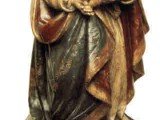
The Benedictine friars were Agostinho da Piedade (1580-1661), the first sacred sculptor in Bahia, and his disciple, Agostinho de Jesus (1600-61).
Jesuits and Franciscans are also included in the gallery of 17th-century sculptors, which grew as the sugar industry grew richer, erecting new temples or enlarging and renovating the old ones.
Over time, the craft of molding, carving and painting the glories of God was passed on to craftsmen already born in the colony, sometimes mixed-race.
João de Deus Sepúlveda, a mulatto from Pernambuco who lived in the second half of the 18th century and painted, among others, the ceiling of the church of São Pedro dos Clérigos in Recife.

Whether it was the work of Portuguese or Brazilians, whites or blacks, Baroque art in the Northeast developed on the coast, transposing and adapting the language of the metropolis to the colony: the lack of marble used in European sculptures, for example, was compensated for by the development of the wood carving technique, which reached the level of excellence with Francisco das Chagas, known as the Cabra, and later with Manuel Inácio da Costa, both from Salvador.
Little is known about the former, except that he was a mulatto and that in 1758 he carved the magnificent Dead Christ with ruby drops of blood for the Third Order of Carmel.
More is known about the second, who lived between 1763 and 1857: considered the greatest sculptor of the time, he left a vast legacy, including the image of Saint Peter of Alcântara in the Church of Saint Francis.
Evolution and History of Fine Arts in the Northeast
Bahian School of Painting
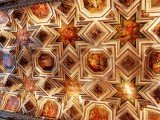
Between the mid-18th and 19th centuries, the influence of the Bahian School of Painting spread to the Northeast. Its greatest exponent, José Joaquim da Rocha (1737-1807), was Brazilian but learned his trade in Lisbon before returning to Salvador, where he became the most sought-after master painter of his time.
Among his works that have stood the test of time is the ceiling of the nave of the church of Conceição da Glória.
Rocha trained numerous disciples, including José Teófilo de Jesus (1758-1847), who, like his master, studied in Europe and worked on church decorations, but also as a portrait painter.
Also from the Bahia School, Antônio Franco Velasco (1780-1833) painted the ceiling of the nave of the Church of Bonfim, among others, but became nationally known for his portraits.
ACADEMICISM
In the 19th century, painting divorced itself from architecture and the demands of religiosity.
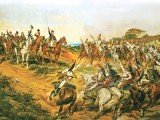
An academic order was established in the Northeast that, maintaining the vocation manifested since the early days of the colony, was mirrored in Europe – the destination of almost all Northeastern artists of the period, some preceded by passages through the Academy of Fine Arts of Rio de Janeiro.
This transit, however, did not mean a rejection of Brazil, but a search for new instruments to portray and construct it.
Thus, it fell to Pedro Américo (1843-1905) from Paraíba to paint what would become the official portrait of the proclamation of Independence, an image incorporated into the Brazilian unconscious – the painting Independência ou morte (Independence or Death), currently in the Museu Paulista (Ipiranga Museum) in São Paulo.
In O último tamoio [The Last Tamoio], Rodolfo Amoedo (1857-1941), from Bahia, helped to construct the image of the Indian as an emblem of the nation he was forming. The Pernambucan Telles Júnior (1851-1914) used the language learned in Europe to portray the Northeast.

Other northeastern artists of importance in the period are the Pernambuco artist Arsênio Silva (1833-83), who introduced the use of gouache in the country, and the Alagoas artist Rosalvo Ribeiro (1867-1915), who specialized in military scenes.
This adaptation of European languages, styles and techniques to the Brazilian reality continued when, from the second decade of the 20th century, artists from the Northeast joined the modernist movement.
Examples of this are the trajectory of two of the greatest Brazilian painters of the period, both from Pernambuco. Vicente do Rego Monteiro (1899-1970) refined a language in Paris marked by indigenous ceramics; Cícero Dias (1907-2003), who in the late 1920s created surrealist-inspired watercolors based on the colors and themes of his native Recife, spent much of his life in Europe without detaching himself from the Northeastern universe.
It is curious to remember that the Northeast not only “exported”, but also received artists who were enchanted by its landscapes.
The Italian painter José Pancetti (1902-58) settled in Salvador in the 1950s, where he produced some of his best seascapes; the Argentine Carybé (1911-97), a painter and draughtsman who recorded elements of Bahian culture with an unmistakable trace, settled there at the same time.
NEW ROADS
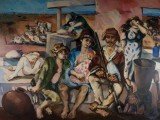
Between the 1940s and 1950s, the Northeastern plastic arts went through a phase of effervescence and renewal. In Salvador, Carybé himself, Genaro de Carvalho (1922-71), known for his tapestries, and the Sergipe painter Jenner Augusto (1923) participated in this movement, as well as the sculptor Mário Cravo (1923).
In Ceará, the Cearense Society of Plastic Arts was created in 1943, from which names such as Aldenur Martins (1922), Sérvulo Esmeralda (1929), Raimundo Cela (1890-1954) and Antôtuo Bandeira (1922-67), a great Brazilian abstractionist, emerged.
In Pernambuco, in 1948, the Collective Studio of the Modern Art Society of Recife was formed, whose greatest exponent is Gilvan Sanuco (1928), a painter and engraver who resumed and renewed the universe of the Northeastern cordel. João Câmara Filho (1944), from Paraíba, also took part in this studio, and later depicted scenes of the country under the military dictatorship in dense, sombre colors.
The exchange between external influences and local references continued and continues today.
It is visible in the constructivism of Rubem Valentim (1926-91), who used symbols from candomblé, and in the sculptures of Francisco Bremund (1927), who in his studio-olaria in Recife works with techniques inherited from the European ceramics tradition.
Born in Poland, the sculptor Frans Krajcberg (1921) lives in the south of Bahia and uses roots, trunks and calcined vines in sculptures that combine artistic research and ecological militancy.
Leonilson, a native of Ceará, developed a vast body of work in São Paulo (1957-93) that includes drawings, paintings and embroidery.
A list of artists from the Northeast or linked to the culture of the Brazilian Northeast would also include the engravings of Guita Charifker (1936), the photographs of Pierre Verger (1902-96), Mário Cravo Neto (1947) and Christian Cravo (1974), the African-rooted sculptures of Agnaldo dos Santos (1926-62) and Emanoel Araújo (1940), the work of Antonio Dias (1944), and would extend to many names, reaching Gil Vicente (1958) and Sebastião Pedrosa, from Recife, and the Bahian Marepe (1970), who exhibits installations and paintings in the galleries of São Paulo and Rio de Janeiro. The art of the Northeast looks beyond its borders.
Plastic Arts in the Northeast




















